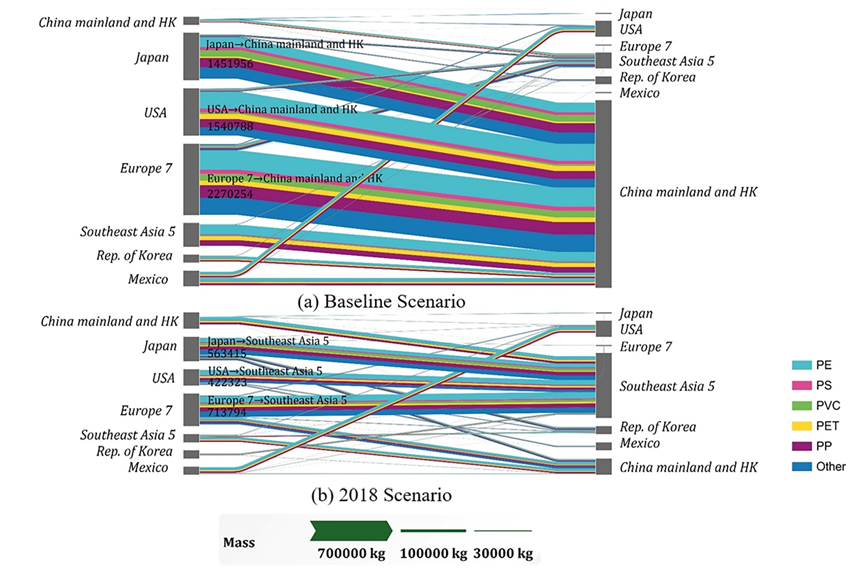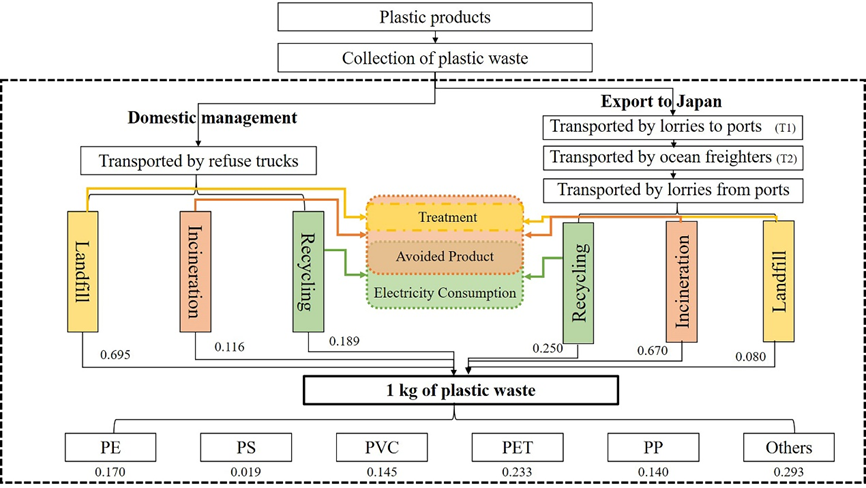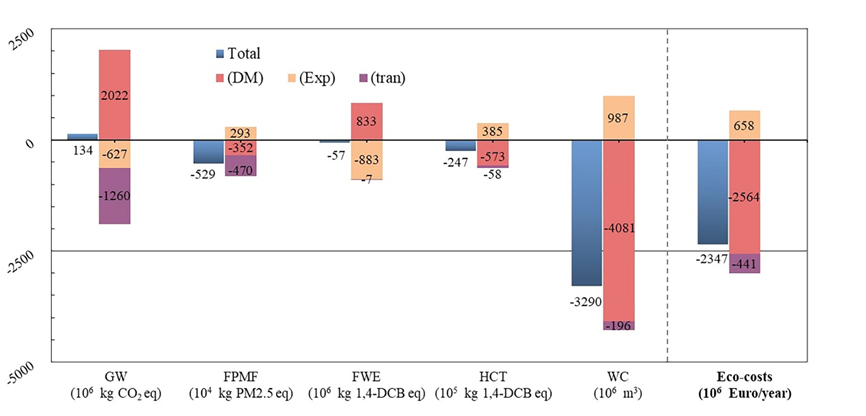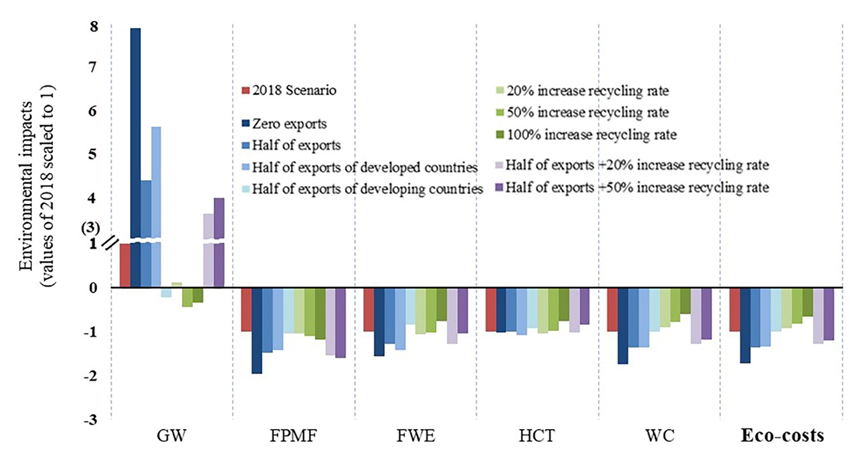SOE, Tsinghua, January 18th,2021 (correspondent: Xie Yiling) On January 18, Professor Wen Zongguo's team at SOE published a research paper online in Nature Communications titled "China's plastic import ban increases prospects of environmental impact mitigation of plastic waste trade flow worldwide". The study quantifies the environmental impacts and eco-costs of trade flows changes and disposal patterns of 18 major countries (regions) and 6 plastic types caused by the China's global ban of plastic waste. Through scenario analysis, the paper predicts the long-term environmental impacts such as declining export volumes and increasing recycling rates, pointing to directions for improving the environmental sustainability of the international waste plastics trade in the future.
Since the late 1990s, it has become frequent and even a norm for developed countries to export waste plastics to developing countries for they need to transfer environmental risks and developing countries had insufficient raw material. However, this has brought serious environmental pollution and eco-health problems to developing countries. As the world's once biggest importer of waste plastics and the largest producer of plastics, China issued �Prohibition of Foreign Garbage Imports: the Reform Plan on Solid Waste Import Management (herein referred to as “the China ban”) in 2017, banning its import of 24 types of solid waste which included plastic waste, resulting in the transfer of global trade flows of waste plastics to Southeast Asian countries and a decline in the overall flow, thus forcing countries around the world to gradually change their waste plastics disposal methods. Because plastic waste treatment methods, structures and technologies vary between countries, so trade flows and treatment structures changes are bound to have a huge impact on global environmental sustainability, but this has not yet been quantified.
The study is based on global international trade data from 2008 to 2019, and sets a �Baseline Scenario to 2018 Scenario to account for changes in international trade flows of waste plastics and their ecological impacts before and after the China ban. The study covered 18 sample countries (regions) and 6 types of plastic �that trade frequently with China in waste plastics. Trade flow analysis (Fig. 1) found that the world’s total plastic waste trade flow plunged by 45.5% in 2018 compared to the Baseline Scenario, with China's imports falling to 4.6% of the baseline. Malaysia replaced China as the biggest waste plastic importer, and imports from five Southeast Asian countries increased to 3.62 times the baseline, a trend that eased in 2019 as Southeast Asian countries have followed China's lead in restricting waste plastic import.

Fig. 1 The trade flows of six types of plastic waste with China Ban ( tons).
The study further established an environmental impact assessment of the waste plastic trade and treatment system in units of 1 kg of waste plastic. The study mainly considers the three main treatment methods of sanitary landfill, incineration and recycling of waste plastics (Fig. 2) and focuses on five midpoint indicators closely related to the treatment of waste plastics. Midpoint indicators are global warming, fine particulate matter formation (FPMF), freshwater ecotoxicity (FWE), human carcinogenic toxicity (HCT) and water consumption (WC). Then the absolute value of global environmental impact changes in domestic treatment, export and transportation were calculated respectively to identify the EIT and Eco-cost of the China ban for 2018 Scenario �(Fig. 3) The study results showed that trade flow changes have a negative environmental impact on global warming, but they have improved the other four indicators and contributed to global environmental sustainability overall. It is found that with China Ban, an annual saving of about 2.35 billion euros of eco-cost was realized, which is equivalent to 56% of plastic waste global trade value in 2017.

Fig. 2 System boundaries for LCA of EIT. (China’s export to Japan as an example)

Fig. 3 EIT and Eco-cost of the China ban for 2018 Scenario.
To explore the possible changes in the future global trade and management of waste plastics, apart from the Baseline and the aforementioned 2018 Scenario, two types of prediction scenarios and a combination of the two scenarios were developed. Calculations proved that reducing exports and increasing recycling rates are both effective measures to reduce the environmental impact of trade in waste plastics, and they can realize eco-costs savings of about 1.54–3.20 billion euros, among which the scenario of " half of exports + 20% increase recycling rate " is the most recommended scenario (Fig. 4) Therefore, developed countries can strengthen the localization management of waste plastics and increase the recycling rate through policy incentives and financial support, while developing countries need to raise awareness of the potential environmental risks of disposing foreign waste plastics and develop relevant restrictive policies in a timely manner so as to improve global environmental sustainability.

Fig. 4 Comparison of the environmental impacts of Exports Reduction Scenarios, Recycling Rate Promotion Scenarios, and Combination Scenarios.
This study was supported by the National Science Foundation for Distinguished Young Scholars and the National Key Research and Development Program. Professor Wen Zongguo of the SOE is the first and corresponding author, and Master student Xie Yiling of the SOE is the second author. SOE graduates Chen Muhan and Master student Ding Jia also contributed to the research.
The link to the paper: https://www.nature.com/articles/s41467-020-20741-9





